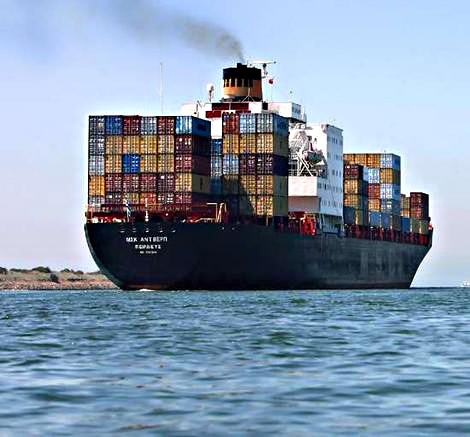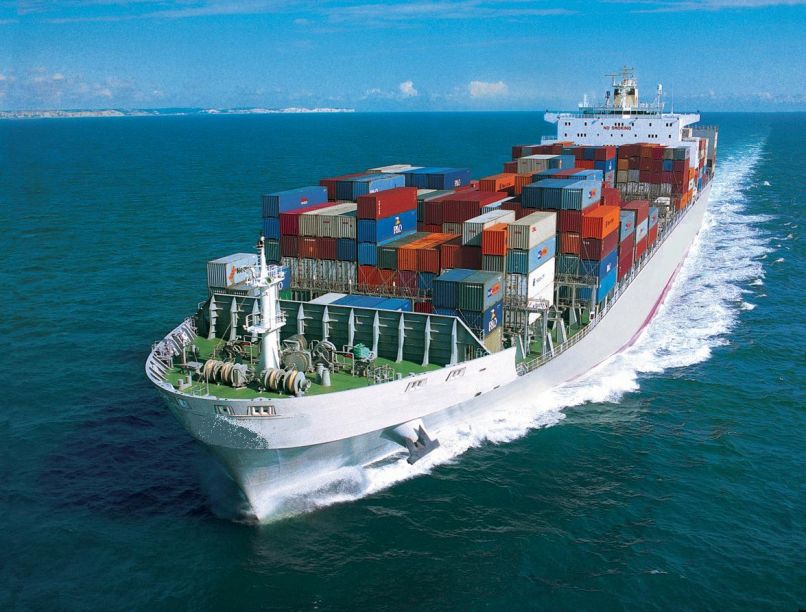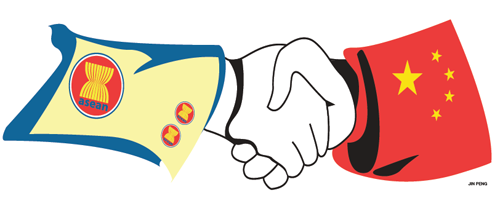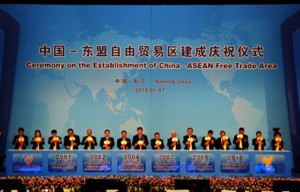
 In the first five months this year, China’s import and export value amounts to $ 1.5109 trillion, an increase of 7.7%. Among which the exports were $ 774.4 billion, up by 8.7%; in May, China’s export reached $ 181.1 billion, scoring a record high, with the growth rate rose from 4.9 percent in April to 15.3%.
In the first five months this year, China’s import and export value amounts to $ 1.5109 trillion, an increase of 7.7%. Among which the exports were $ 774.4 billion, up by 8.7%; in May, China’s export reached $ 181.1 billion, scoring a record high, with the growth rate rose from 4.9 percent in April to 15.3%.
Why is this strong rebound in China’s export growth? Can this trend be maintained? Several officials of the Ministry of Commerce and Industry experts were interviewed on this topic.
As Market Diversification Began to Show Effects, the Export to the United States and ASEAN Witnessed Swift Growth
Chinese export growth rebounded greatly in May. An important reason for this is the good performance of some of the major export markets. In the first five months, exports to the United States, ASEAN, and Russia were up 14.4%, 14.8% and 15.3% respectively, driving the increase in export by 4.1 percentage points. In May, the United States, ASEAN, and Russia’s increase are 23%, 28.3% and 18.9% respectively.
The Commerce Department official said this may has witnessed a huge increase in exports to the U.S., which is mainly because the U.S. economic recovery is getting better and better. In the first quarter this year, American economic growth ratio of circle year reached 1.9%. The consumer confidence kept on rising month by month, driven by the increased demand for imports. In the meantime, the effect of the strategy of market diversification effect is further demonstrated. Through relying on the support of the China – ASEAN Free Trade Area, export to ASEAN and other emerging market has always maintained a rapid growth, the proportion of China-ASEAN trade is keep on expanding .
Industry experts believe that the rebound in export growth in May in line with market expectations, but more than expected, and seasonal factors also an important reason. Generally the May and the June is the period for centralized delivery, and the completion and delivery of orders stimulated export growth. According to Li Jian, the researcher of the Ministry of Commerce, As this year’s “May Day” holiday arrangements is April 29, April 30, and May 1, which depressed the April data and pushed up the data in May instead. On the other hand, RMB appreciation trend slowed down in May, and the rate of RMB against the U.S. dollar depreciated by 0.9 percent , which is obviously more favorable for export enterprises
As the European debt crisis continues to ferment, the export growth rate of processing trade dropped
Influenced by the weak European economic recovery, although in May our exports to the EU increased by 3.4% , but before May the EU ‘s total exports decreased by 0.8%, among which the exports to Germany , France and Italy decreased by 3.4% , 3% and 25.1% respectively . Meanwhile, export to india slowed down to 1.1 percent, while the export to Taiwan fell by 8.6 percent.
The reason is mainly due to the fermenting European debt crisis , the Greek political instability lead to an increased risk of exit in the euro area , the continuous development of the Spanish banking crisis , EU parties in the crisis Solutions differences increase , resulting in financial markets to a severe shock , investment and consumer demand have been affected. One – quarter of the EU economy , zero growth in the nine member economies into recession .
In addition, since 2011, affected by the tight environment of domestic and international environments, China’s processing trade export growth continued to drop. Among China’s export to Taiwan, the processing trade accounted for 51%. Therefore, the short of power in the processing trade greatly affected our overall export to Taiwan.
According to the official of Ministry of Commerce, in the next period the Ministry will implement the central policies and measures to settle the stability of the foreign trade growth, stabilize the enterprise expectations and boost the confidence of the enterprise. Therefore, the support to the emerging market and trade facilitation could be further improved. Besides, those measures and policies could help the enterprises to tackle the actual problems in operating and managing the enterprises, so as to face with the trade friction.
Exports in the Eastern Area Continued to Slow Down, and the Export of Mechanical and Electrical Products Began to Speed Up
From the regional perspective, in the first five months, the eastern region’s exports grew by only 5.2%, and the trade revenue of Guangdong, Jiangsu, Zhejiang, Shanghai, and Beijing were up by 6.9% , 2% , 5.3% , 3.1% and 4.8% respectively. While in Shandong province the trade turnover declined by 0.5 %. In the mid-west region the exports were up by 25.2% and 56.3% , demonstrating a rapid growth. Among which the export growth in Chongqing and Henan were 2.3 times and 1.1 times respectively, while in Sichuan, Jiangxi and Guangxi, the export growth were 78.7% , 57.2 % and 22.7% respectively.
Why there was such a big difference among the eastern, central and western regions? Official from the Ministry, with the rising costs of domestic labor and other factors, export enterprises, especially the enterprises in the eastern region generally faced with difficulties of a narrowed profit margin and there is also decline in operating efficiency. In the eastern area, the upper level of the minimum wage standard have been more than 1000 yuan/ month , and Zhejiang and Guangdong province have been more than 1300 yuan/ month.
Correspondingly , the central and western regions industrial supporting capacity improved significantly in recent years. The overall costs are relatively low. And the aspiration and propelling power have been on the rise. And the foreign-funded production capacity in the Midwest region has been transferred. Besides, the momentum of the new investment is also significantly enhanced, driven by rapid growth in exports of some parts of the region.
??
Viewing from the product structure, in the first five months, the mechanical and electrical products exports increased by 9.9%, among which machinery and equipment have grown by 12.1%. And the apparel and textile export growth in the doldrums grew by 2.5% and 1.4% respectively. In May, the exports of mechanical and electrical products increased by 14.9%, and the export of traditional labor-intensive products has been on the rise, and lamps, plastic products, furniture, luggage, footwear increased by 98.1% , 62.6% , 56% , 32.2% and 24.6% respectively.
Exports Rebound Help to Release the Economic Pressure, and the Prospect of Export Is Still Unclear
“After experiencing the international financial crisis, China’s export enterprises began to open up external markets and improve innovation capabilities to continuously advance product competitiveness.” Official from the Ministry so said. Some countries began to pay more attention to the real economy and infrastructure, which has also led to increased upstream and downstream industry demand for imports. In the future, the Ministry of Commerce will play an important role in stabilizing foreign trade growth and the transforming mode of foreign trade development. In addition, the ministry will lay emphasis on nurturing new technology, brand, quality and service as the core competitive advantage. And the export product mix could be further optimized, and the quality of export products and added value could be further improved. And the export enterprises should accelerate brand building and driving forward the brand and technology products trade.
Li Jian believes that in the future, the trend of exportation cannot be stabilized. With only one month’s statistics, it is difficult to predict whether the economic performance could be further improved. At present, the recovery of the international economic situation is still very severe, and the U.S. unemployment rate began to rise, besides, the debt crisis in Europe is still uncertain. And the operating pressure of the domestic export is still hard to be significantly alleviated. In addition, as the exchange rate and labor cost is still on the rise, enterprises still find it difficult to do financing. Therefore, more efforts are still needed in order to realize annual foreign trade growth of 10%.
According to the research report recently released by the Gao Hua Securities, the favorable trade statistics in May tend to lead people to easing the concerns over whether the economic growth would further slow down. However, the trade statistics in a single month tends to experience many fluctuations. Therefore, it is better to be prudent over the future. The report argues that China’s central bank issued a clear signal that “although the trade data is better than expected and the industrial added value and fixed asset investment data is slightly improved, the overall growth is still sluggish, therefore, the policies still need room for relaxation.”









